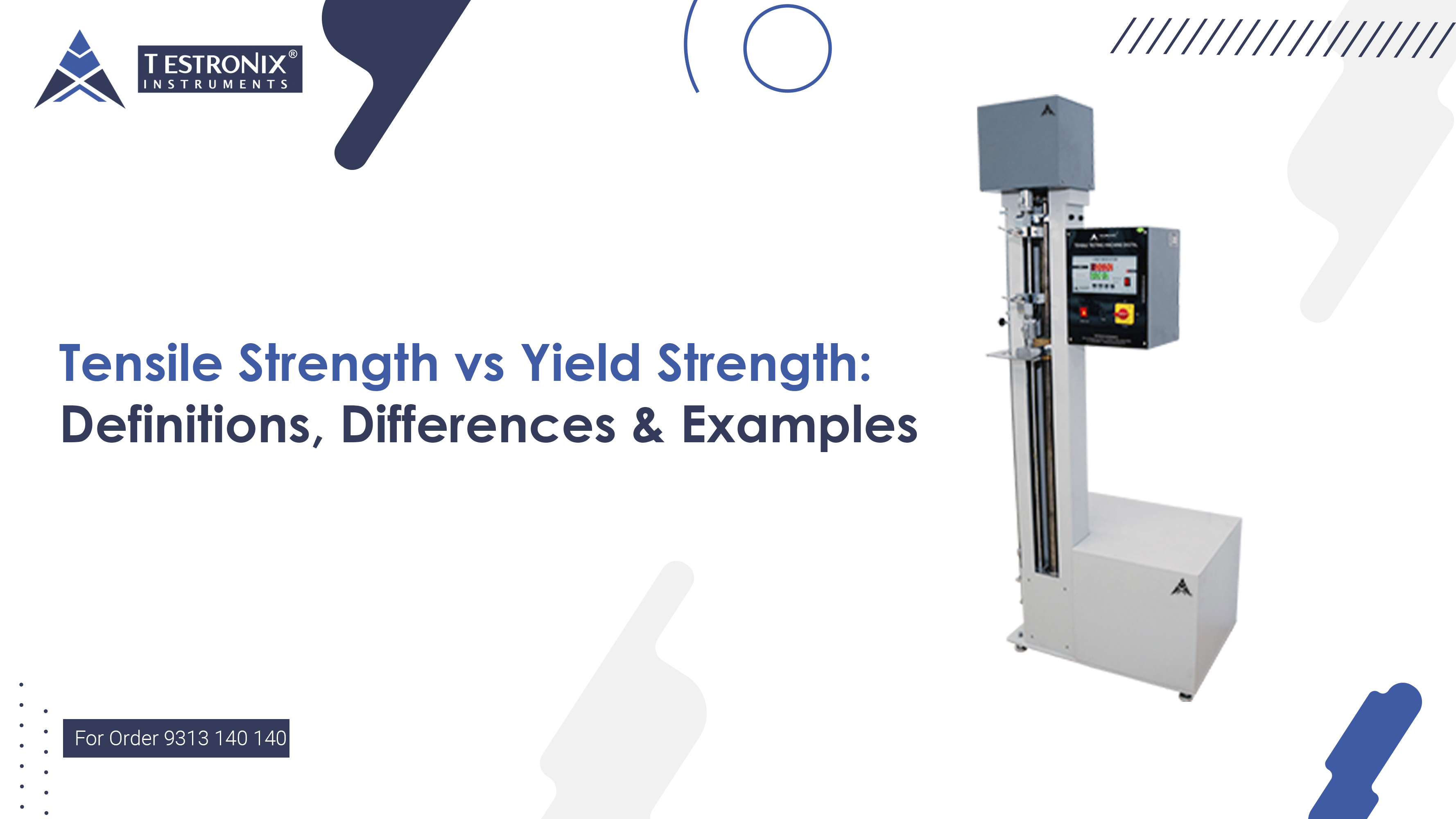Steel mechanical properties must be known to engineers, manufacturers, and other persons who work with structural materials. Two of the most important properties are the tensile strength and the yield strength.
While they are dependent on each other, they serve different purposes in material testing and application. Let us review their definition, formulas, differences, and implications for using steel.
What is Tensile Strength of Steel?
Tensile strength, often called ultimate tensile strength (UTS), is the maximum amount of tensile (pulling) stress that a material can withstand before it fractures or fails. It measures how well steel can resist breaking under tension and is a key factor in determining the material's overall durability and strength.
In simple terms, it's the peak of the stress-strain curve before necking and fracture. For steel, this is usually expressed in pounds per square inch (psi) or megapascals (MPa). The formula for tensile strength is:
S = P/A
Where:
S is the tensile strength.
P is the force at maximum that may be applied before the material fractures.
A is the cross-sectional area of the material.
Also read: Tensile Strength: Definition, Units, Formula, and Testing Methods
What is Yield Strength of Steel?
Yield strength is a critical measure of a material's resilience, representing the maximum amount of stress it can tolerate before it yields to permanent or plastic deformation. It signifies the point at which a material begins to lose its structural integrity, transitioning from a state of elasticity to plasticity (permanent deformation).
Understanding yield strength is essential for engineers and designers, as it ensures that structures can withstand the forces of nature and human use without compromising their original form. The formula to compute yield strength is:
Yield Strength (σy) = Force (F) / Area (A)
Where:
F = Load at which material begins to yield (in newtons or pounds)
A = Original cross-sectional area
Tensile Strength vs Yield Strength in Steel
Tensile strength is the maximum stress steel can withstand without breaking, while the yield strength is the stress at which steel begins to be permanently deformed and is the transition point from elastic to plastic more convenient.
Following is the difference between Tensile Strength and Yield Strength in a table format:
| Property | Yield Strength | Tensile Strength |
| Definition | The stress at which plastic deformation begins | Maximum Stress before breaking |
| Nature | Indicates the elastic limit | Indicates the ultimate limit |
| Permanent Deformation | Begins after this point | Fracture occurs beyond this point |
| Value | Lower than tensile strength | Higher than yield strength |
| Importance | Ensures safe design load times | Determines material durability |
Definition and Meaning
Yield Strength is the point where steel starts to bend or deform permanently when pulled. Tensile Strength, on the other hand, is the maximum stress steel can handle before breaking completely. So, yield strength tells you when the steel starts to lose its shape, while tensile strength tells you when the steel will snap or fail under tension.
Purpose in Design and Testing
Engineers use yield strength to design structures safely because it marks the limit before steel deforms permanently. Tensile strength is used to understand the ultimate capacity of the material. While yield strength helps prevent long-term damage, tensile strength helps ensure the material won’t suddenly fail. So, yield strength is used for safety margins; tensile strength for knowing maximum limits.
Behavior Under Load
When steel is pulled, it first stretches elastically (can return to its original shape), and then plastically (permanent deformation). Yield strength is reached at the end of elastic behavior—beyond this, steel won't return to its original shape. Tensile strength comes later, at the point just before the steel breaks. So, yield strength happens earlier in the loading process than tensile strength.
Importance of Material Selection
When choosing steel for a specific job, yield strength is crucial for parts that must not change shape, like beams or columns in buildings. Tensile strength becomes more important in parts that experience pulling or stretching forces, like cables or fasteners. So, depending on whether the focus is on preventing bending or avoiding breakage, engineers prioritize yield or tensile strength during selection.
Numerical Value
For most types of steel, tensile strength is higher than yield strength. This is because steel can stretch a bit more after it begins to deform before it actually breaks. For example, a mild steel may have a yield strength of 250 MPa and a tensile strength of 400 MPa. That gap gives the steel some room to bend under stress before failing.
It should be noted that in structural engineering, yield strength is important since it defines the maximum safe load that can be applied without resulting in permanent deformation. Tensile strength, however, informs us about how tough the material is in general and how much load it can withstand before failure is catastrophic.
For Example:
-
When designing a bridge, yield strength informs us about how much weight the bridge can safely bear.
-
Tensile strength is more important when choosing materials for wires, cables, or parts likely to withstand large pulling forces before they fail.
The majority of steels possess a yield strength of 250–550 MPa, with tensile strength ranging from 400–800 MPa, although these depend on alloy and treatment.
Conclusion
Tensile strength and yield strength are basic but different mechanical properties of steel. Yield strength determines the limit of elastic behavior and signifies the beginning of permanent deformation, whereas tensile strength denotes the maximum stress steel can withstand before it fractures. Both need to be known for material selection, structural safety, and optimization of performance in engineering and industrial purposes.





